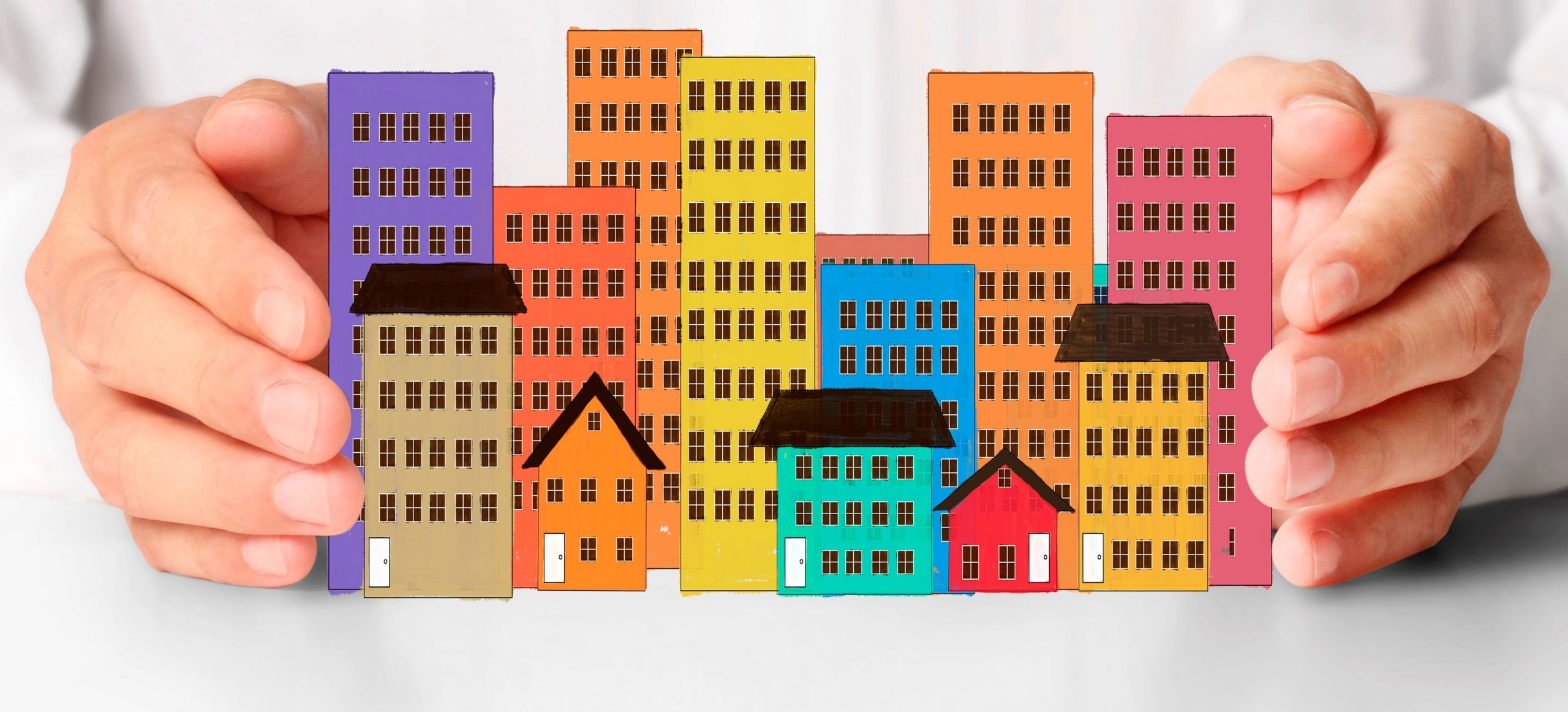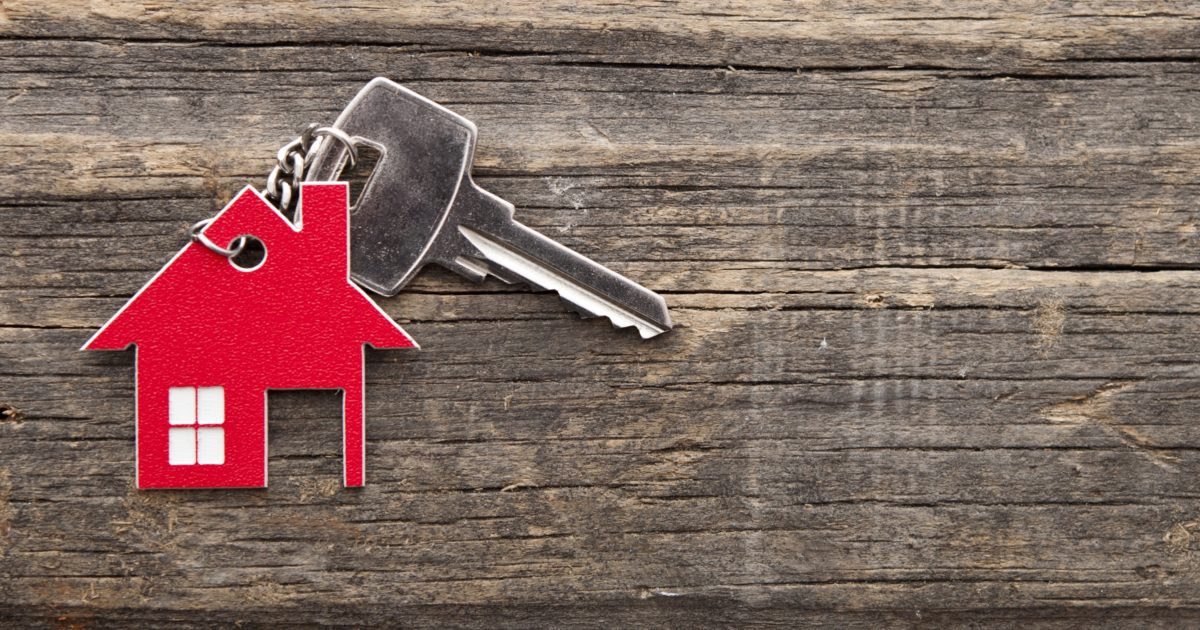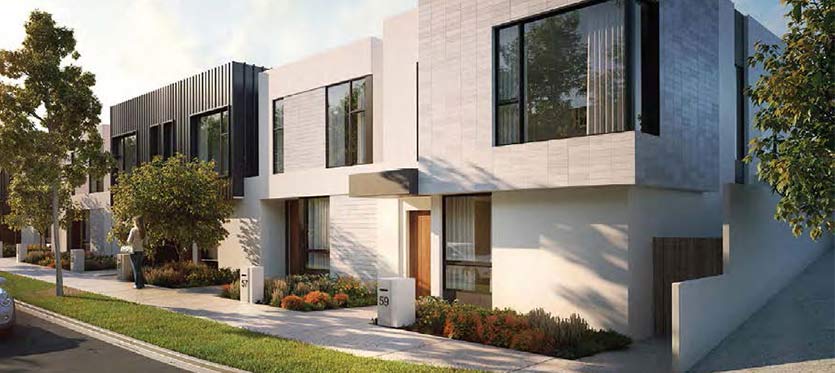The adoption of NSW’s re-branded housing code offers amazing opportunities for developers. Find out more about the Code and what it may mean for your work.
The challenges of working as a property developer extend far beyond designing and building properties. That’s because every council that you work with has different rules and regulations. To complicate matters, these regulations vary on the local level, as well as the state-wide one.
Failure to understand them could lead to delays in, or even the cancellation of, your project. Of course, that means you end up losing a lot of time and money.
Let’s assume you’re a developer who focuses on NSW. You’ve likely read about the state’s Low Rise Housing Diversity Code. The Code offers plenty of new opportunities for developers in terms of faster construction of this property type.
However, there’s also a lot that you need to know about the new Code before you can put it into practice.
In this article, we run through the key issues that developers may face when working with the Code. We discuss its benefits and what you need to know to ensure your development meets the new regulations.
What Does the Code Say?
First, there are two names that you may hear people refer to the Code as. During the proposal stages, the Code was known as the Low Rise Medium Density Housing Code. This is the phrasing that most developers have already heard.
But now that the Code is in practice, it’s received a rebranding. It is now known as the Low Rise Housing Diversity Code.
Either way, the purpose of the Code is to enable developers to create a more diverse selection of properties in NSW. It essentially creates a fast-track development application system for the following property types:
Dual Occupancies
Terraces
Manor Houses
The intention is to make it easier for developers to build multi-occupancy properties. These properties will serve the needs of the state of NSW, which undergoes continued population increases each year.
So, what do we mean when we say fast-track?
A typical Australian development application (DA) can take up to four months to receive approval. This varies depending on the state and the type of property that you’re developing. However, the point is that getting a DA over the line is often a long and arduous process.
But with the Code, you can receive approval in as little as 20 days if your application complies with all of its regulations. Of particular importance is the State Environmental Planning Policy (Exempt and Complying Development Codes) 2008. Failure to adhere to this policy will lead to the refusal of a complying development application.
While both local councils and accredited certifiers can give approval for proposed developments, the key to this Code is the word ‘diversity’. That’s because NSW has put it in place to encourage more diverse types of construction.
Typically, developers focus on building traditional houses or apartment complexes in the state. This Code, however, makes it easier to create other types of multi-occupancy buildings.
This is especially important outside of the main Sydney CBD. Local councils may hesitate to approve a high-rise building in such areas. However, these low-rise alternatives fit well into a larger variety of neighbourhoods. This makes them more appealing to both local councils and residents.
It’s also important to note that the Code does not apply to every region of NSW. Currently, you can only create a development under the Code for the following zones in the state:
R1 (General Residential)
R2 (Low-Density Residential)
R3 (Medium-Density Residential)
RU5 (Village)
The property types covered in the Code are already permitted in these four zones. While other zones may adjust their Local Environment Plans (LEPs) in the future, this possibility is not something that you should rely on as a developer. This means the Code may not have relevance to you if you work outside these four zones.

Why is the New Code Needed?
As mentioned, the need for greater levels of housing diversity forms the core need behind the Code.
We can look to the Resilient Sydney Context Report 2016 for a better explanation. It says:
“There is a lack of diversity of housing catering to Sydney’s growing, aging and diverse population, with a need for user-centred and people-driven responses to housing affordability issues, including housing type and financing structures.”
In other words, the lack of medium-density housing means that NSW isn’t serving the needs of its population.
The stats bear this out as well. That’s because this type of housing made up 19.7% of properties in Greater Sydney back in 2011. But in the five years between 2011 and 2016, this number only increased by 0.6%.
In real terms, this represents 38,000 additional medium-density properties built in five years.
Some may argue that this is a simple case of supply and demand. Developers aren’t building these property types because the market isn’t there for them. These people will argue that the states prove that high-density is the housing type that the market wants.
And the stats would appear to support that.
In the same five-year period discussed above, high-density housing saw greater construction levels. It accounted for 23.5% of all housing in 2016 alone. And between 2011 and 2016, developers built 80,600 homes that are of the high-density property type.
Although impressive, these stats do not tell the whole story.
The issue with the focus on high-density properties is that they’re not socially sustainable. They also fail to offer the diversity – both in housing type and pricing – that NSW needs.
Think of it like this.
Currently, high-density and traditional houses make up the majority of NSW’s housing stock.
But imagine that you have a young working family with one child. An apartment block isn’t big enough to meet their needs. However, affordability is an issue when looking for a traditional home. It’s because at the time of writing, the average cost of a house in Sydney stands at about $900,000. That’s unaffordable to many young professionals.
Medium-density housing provides a middle ground.
It offers more space for the young family than a traditional apartment block would. However, that space does not come at as high a cost as they’d face when buying a traditional house.
That’s just one example of a demographic of people that NSW’s current housing stock doesn’t serve.
You could also consider the fact that the state has an ageing population. In fact, current estimates state that we’ll see an extra 1 million people aged over 64 in NSW by 2041. An older resident may want to downsize from a traditional house. Moving into a high-rise apartment complex isn’t an option. Beyond space, such building types could create difficulties for an older person.
Again, medium-density housing acts as a solution.
The point is that there’s an unfulfilled need for medium-density housing.
The development stats cited above don’t accurately represent the level of demand for this type of housing. And with the advent of the new Code, developers now face fewer hurdles in construction. The fast-track process makes building medium-density easier for them. This ultimately results in higher profits, which make these types of developments more attractive.
Which Housing Types Qualify Under the Code?
As mentioned, the Code allows for the fast-tracking of three property types:
Dual Occupancies
Terraces
Manor Houses
Aside from these three, it also allows for the conversion of existing properties into dual occupancies.
But you may need more detail for these property types.
Dual occupancy covers a pair of dwellings on a single lot. While these dwellings must be side-by-side, they don’t necessarily have to attach to one another. You can create two separate dwellings on the same lot and call it a dual occupancy.
Terraces bump the number up to three dwellings on a single lot. However, these dwellings must directly front a public road to remain compliant. Note that there should also be no dwellings above the terrace. Each dwelling must also offer access to occupants at the ground level.
Manor houses, on the other hand, are a little more complicated.
These are buildings that contain between three and four dwellings. The building must be on a single land lot and can be two storeys or less in height, but basements aren’t counted as a storey in manor houses.
Each dwelling must attach to another via either a floor or a common wall. It’s also a requirement for at least one dwelling to sit at least partially over another.

The Benefits of the Code for Developers
The Low Rise Housing Diversity Code offers a range of benefits for developers, residents, and NSW itself. The following are the most important and act as key reasons for you to consider working under this Code.
Benefit #1 – Faster Approval
From a developer’s perspective, this is the key benefit.
The Code drastically reduces the time needed to get development approval for this housing type. This means the developer undergoes far less costly reworking of designs. It also means less time spent on going back and forward with local councils.
With a Complying Development Certificate (CDC), you could start construction in as little as 20 days.
That’s a massive incentive for developers that previously avoided medium-density projects. With one of the most prohibitive costs erased, you can focus on ensuring you’re compliant. According to NSW’s planning portal, there are only five key steps that you need to follow:
Create your proposal and check if the Code applies to it.
Work with relevant professionals to create your plans.
Lodge a Complying Development Application with a Principal Certifying Authority (PCA) or your local council.
Inform those in the surrounding area about the development proposal. Note that this is not always a required step.
Build the property once you have approval.
It’s a simplified process that makes your life as a developer much easier.
Benefit #2 – The Code Encourages Quality Design
Sustainable housing design is a must under the Code. However, it provides stringent guidelines for developers to adhere to.
This is beneficial on two levels.
For developers, the cost makes creating quality buildings simple.
You just need to follow the rules and you have a compliant design. This means you’re not struggling with design variances or trying to figure out what the council wants.
For local councils, the Code ensures strict quality standards.
Again, there is a strict set of rules to check an application against. A CDC application only needs to be checked against the Code. If it complies, they know they have a quality building on their hands. This leads to fewer issues regarding whether the building fits the character of the local area or not.
Benefit #3 – NSW Receives More Housing Supply
The previously-mentioned increase in high-rise construction in NSW serves a purpose. The state has a constantly growing population and with it, the need for housing increases.
Between 2011 and 2019, the state’s population grew by about 782,000. Not only that, the average year-on-year population growth stands at 1.295%. This shows that there’s a constant influx of demand for new housing stock in NSW.
What’s more, this population increase isn’t likely to slow down. Current estimates state that NSW will see an increase in population of 2.9 million people by 2041.
As previously mentioned, high-rise and traditional housing alone don’t serve this need. The Code makes it easier to build a particular type of dwelling that meets the demands of the state’s population.
The ultimate benefit is that NSW receives more housing stock to serve its growing population.

Benefit #4 – Improved Affordability for Buyers
We’ve briefly touched on the affordability issue in NSW. The average cost of a house in Sydney hovers around the $900,000 mark, at the time of writing. That’s out of the budget for a large portion of the population, particularly young families. And a small apartment space doesn’t suit the needs of most families.
The Code enables the fast production of more affordable housing in the state. It provides the middle ground that a large portion of the population needs.
Benefit #5 – Improved Housing Choice in NSW
Again, we touched on this previously with our example of the young family that can’t afford a house.
The NSW Low Rise Housing Diversity Code provides a greater depth of options for NSW’s growing population. In particular, it will lead to a larger volume of medium-density housing. This is especially desirable for young families and older residents. However, it’s likely that immigrants, and even single professionals, will also appreciate the greater range of choices.

Working With the Code
As with any housing code, there are rules and exclusions that you need to keep in mind.
In terms of exclusions, your development may not be any of the following:
A development on a heritage conservation area.
A development that includes either a local or state-listed heritage item. In other words, you can’t convert a heritage property into a modern medium-density building.
You cannot create medium-density housing on land that’s used for public purposes.
You cannot build on unsewered land.
You may not build over an easement.
The Code does not include alterations or additions to roof terraces.
You may not use the Code if a secondary dwelling or group home is already on the land.
The Code does not include development on battle-axe lots. This is a lot created behind a full-frontage lot that offers access via an access strip or easement.
Beyond this, local councils may have their own exclusions in place. These will typically be areas that have some form of environmental purpose.
For example, it’s likely that most councils won’t allow you to develop on critical habitats. The same goes for land that threatened species inhabit.
The following will be taken into consideration when looking at your CDC application:
Is the lot in an area that’s prone to bushfires?
Are there flood controls in the area?
Does the land fall within the Sydney Drinking Water Catchment?
Please note that these three considerations don’t result in automatic exclusion. CDC applications will be examined on a case-by-case basis.

-Lot Size And Other Requirements
In addition to the exclusions, you must consider the council’s Local Environment Plan. The LEP will define the minimum size of the lot that you can use for particular types of housing.
However, not all LEPs will define specific lot sizes. As such, the Code offers the following requirements when the LEP has no defined sizes:
Dual Occupancy – The lot size must be at least 400m2 when the LEP does not state a minimum lot size. Its width must be 15m or more at the building line of the parent lot. However, this falls to 12m if you can only access the lot via a lane, parallel road, or secondary road.
Terraces – The lot size must be at least 600m2 when the LEP does not state a minimum lot size.
Manor Houses – Like with terraces, the lot size must be at least 600m2 when the LEP does not state a minimum lot size. It must also have a minimum width of 15m at the building line.
Failure to meet the local council’s lot size requirements will lead to a refusal of your CDC. If you’re unsure, check with the council to see if they have defined sizes in their LEP. If they don’t, work to the sizes specified in the Code.
Beyond the lot size issue, there are several other requirements that you must adhere to. These include the following:
The maximum height of the dwelling and any development attached to it cannot exceed 8.5m above ground level.
The setback of a dwelling house and any attached development from a primary road must not be less than the average setback from the primary road of the 2 nearest dwelling houses on the same side of the primary road. In cases where there are no two dwellings nearby, the Code sets the following setback requirements based on lot size:
200m2–300m2 – 3m
>300m2–900m2 – 4.5m
>900m2–1,500m2 – 6.5m
>1,500m2 – 10m
The maximum height of walls that are within 900mm of a side boundary may not exceed 3.3m. However, there are two exceptions to this, namely:
If a building wall exists oan a lot that adjoins yours and is within 900mm of the side boundary. In this case, the wall you can build can match the height of the building wall, assuming it does not go above 8.5m.
If the building on the lot that adjoins yours is also subject to the CDC of your development. Again, the height of the wall may not exceed 8.5m in this circumstance.
You may attach rear or side decks, terraces, balconies, patios, terraces, and verandahs, as long as they meet the following requirements:
Be no more than 12m2
Be within 6m from a rear or side boundary
The finished floor level must be a minimum of 2m above ground level
The lot must have a landscape area as part of the development. The minimum size of the landscaped area varies depending on the lot size and building type, as follows:
- Manor houses & Dual occupancy – 50% of parent lot area minus 100m2
- Terrace Houses in R1, R2 & RU5 zones where concurrent subdivision is proposed: The minimum area that must be provided for each resulting lot – 30% of lot area.
Terrace Houses in R1, R2 & RU5 zones where no subdivision is proposed: The minimum landscaped area that must be provided is 30% of the parent lot area of which at least 54m2 is to be allocated to each dwelling.
- Terrace Houses in R3 zones where concurrent subdivision is proposed: The minimum area that must be provided for each resulting lot – 20% of lot area.
Terrace Houses in R3 zones where no subdivision is proposed: The minimum landscaped area that must be provided is 20% of the parent lot area of which at least 36m2 is to be allocated to each dwelling.
Earthworks and Retaining Walls
Any earthworks or retaining walls that you build must meet the following maximum depth conditions:
If 1m to boundary, then 1m
If 1.5m to boundary, then 2m
Greater than 1.5m to boundary, then 3m
If classified as Class 3 or 4 ASS, then 1m
If within 40m of waterbody, then 1m
If in an aquifer, then 1m
Furthermore, any excavation of above 1m requires a geotechnical investigation before you can proceed.
You can also use absorption trenches for on-site water disposal, though these are subject to DCP compliance. Furthermore, the Code also covers any tree removal or pruning. However, protected trees are subject to a 3m exclusion zone.
Fences
Any fences that you build must meet the following criteria:
Max. 1.8m high
Max. 2.2m high if stepped
Max. 1.2m high in front of building line
Max. 1.5m high adjacent to public reserve
Max 2.1m high in setback of classified road
Be open 20% if more than 400mm above ground with a minimum of 25mm aperture
There are also several exclusions written into the Code in regard to fencing. Your fence may not be any of the following:
On a boundary
Within the required setbacks
Made using barbed wire
Electrified
Made using anything other than low reflectivity metal
Placed on bushfire prone land and combustible
Restrictive of floodwater flow
Swimming Pools
The Code does allow for the building of swimming pools on your lot. However, there are several criteria that the pool must meet to comply with the Code:
The pool’s water level can be a maximum of 1.2m above the existing ground level.
The pool must be in association with the development for resident use.
It must have the same setback as a secondary road.
The pool may only be placed in the rear yard.
The Design Guide
It’s also crucial that the design of your building meets the Code’s requirements. To help with this, NSW’s Department of Planning provides design guides. You will find these at the following links:
Guide for Complying Development – Click Here
Guide for Development Applications – Click Here
These guides will assist both developers and local councils.
They provide both with the best practices for both design and control standards for medium-density housing. This ensures consistency across the board for these types of projects. They also help designers understand the limits that they must work within.
The guides are a joint effort from local councils, communities, and the general industry. Their ultimate aim is to ensure an ideal outcome for all involved in the project.
It’s also important to note that the Code requires a Design Verification Statement. This gets attached to your CDC as proof that you’ve followed the design guides. These statements can only come from one of the following:
A building designer who holds a Building Designers Association of Australia accreditation, or
A registered architect.
Where Can You Go For Further Education
NSW’s Department of Planning promises to release an educational program related to the Code. While not operational at the time of writing, it will be available to all relevant parties in NSW.
When did the Code Become Operational?
The original version of the Code went into effect in July 2018. However, several NSW councils obtained notices of deferral to delay its introduction. At that time, the Code became operational in 82 council areas only.
In 2019, questions from other NSW councils resulted in an independent review of the Code. This resulted in several small alterations to the original Code, including:
The renaming of the Code to the Low Rise Housing Diversity Code.
Ensuring the Code does not apply to unsewered land.
Allowances for local councils to set minimum lot sizes at their discretion.
The implementation of an uptake tracking system for the Code.
With these changes in place, the Code officially launched on 1st July 2020. It is currently in effect, which means you can start making applications under the Code.
How Can Archistar Help You?
With the Code in effect, you’re likely wondering how you can take advantage of it. The information and links provided in this article give you a good start. Using this, you can start applying the Code to your developments today.
But perhaps you’re looking for a way to make things even easier?
After all, you still have to keep track of local council LEPs. And the Code allows councils to set their own minimum lot sizes. Despite the fast-tracking nature of the Code, there’s still a lot of research that you need to do.
That’s where Archistar comes in.
We’ve implemented the Code requirements into the Archistar platform to allow you to quickly check your development against it. This means the platform takes all variances due to local council LEPs into account. Furthermore, Archistar can tell you if your design complies with the Code.
Using the platform leads to even more time saved when building medium-density housing in Sydney. And ultimately, that means lower costs for you, which means higher profits on your project.
And this only scratches the surface.
Archistar offers a host of tools to make the design and development process easier. The platform draws from the latest data from both CoreLogic and Cordell. It also features NearMaps integration and a powerful generative design engine.
The Code makes it easier than ever to develop low rise medium-density housing. Now, use Archistar to make the development process as smooth as possible.
Ready to find out more?
Get started for free: [https://www.archistar.ai/]

